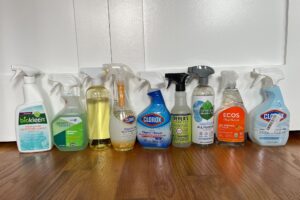Stains on your sofa can be a source of frustration, but with the right approach, you can tackle them effectively without needing professional help. Whether it’s a coffee spill, pet accident, or general grime, knowing how to address stains quickly and correctly is key to maintaining your sofa’s appearance. In 2024, DIY stain removal techniques have become more refined, utilizing common household items and effective methods to keep your upholstery looking its best. Here’s a comprehensive guide to help you remove stains from your sofa with simple DIY tips.
Act Quickly to Prevent Stains from Setting
The sooner you address a stain, the easier it is to remove. As soon as you notice a spill or stain on your sofa, act quickly to blot up as much of the liquid or residue as possible. Use a clean cloth or paper towels to gently blot the area—avoid rubbing, as this can push the stain deeper into the fabric. By taking immediate action, you can prevent the stain from setting and make the cleaning process much easier.
Blotting vs. Scrubbing: The Right Technique
When dealing with stains, blotting is generally more effective than scrubbing. Blotting helps to lift the stain out of the fabric without spreading it further. For liquid stains, use a clean cloth or sponge to blot the area gently, starting from the outside and working inward to contain the stain. For solid stains, such as food crumbs, use a spoon or dull knife to carefully lift away as much of the residue as possible before blotting. Scrubbing can damage the fabric and make the stain worse, so always opt for blotting when dealing with upholstery.
DIY Cleaning Solutions for Common Stains
- Coffee and Tea Stains: Mix one tablespoon of dish soap with two cups of warm water. Use a clean cloth or sponge to blot the stain with the soapy solution, then rinse with clean water and blot dry. For stubborn stains, add a tablespoon of white vinegar to the solution.
- Wine Stains: Sprinkle salt or baking soda on the stain to absorb as much of the wine as possible. After a few minutes, vacuum the area and then blot with a mixture of one tablespoon of dish soap, one tablespoon of white vinegar, and two cups of water. Rinse with clean water and blot dry.
- Grease and Oil Stains: Sprinkle baking soda or cornstarch on the stain to absorb the grease. Let it sit for 15-20 minutes, then vacuum or brush off the powder. Apply a mixture of dish soap and water to the stain, blot with a clean cloth, and rinse with water.
- Ink Stains: Dampen a cloth with rubbing alcohol and gently blot the ink stain, working from the outside in. Be cautious not to oversaturate the fabric. Once the stain is lifted, rinse with clean water and blot dry.
- Pet Accidents: For urine stains, blot the area with a clean cloth, then apply a mixture of equal parts white vinegar and water. Blot the area and rinse with water. To neutralize odors, sprinkle baking soda on the area after it has dried, let it sit for a few hours, and then vacuum.
Testing Cleaning Solutions
Before applying any cleaning solution to your sofa, it’s crucial to test it on an inconspicuous area first. Apply a small amount of the solution to a hidden part of the fabric and wait for a few minutes to ensure it doesn’t cause discoloration or damage. This step helps to prevent any adverse reactions and ensures the solution is safe for your upholstery.
Using Upholstery Cleaners
If DIY solutions are not effective, you might consider using a commercial upholstery cleaner. Choose a cleaner that is appropriate for your sofa’s fabric type, and follow the manufacturer’s instructions carefully. Many upholstery cleaners are designed to tackle specific types of stains and can be a valuable addition to your cleaning toolkit. Always perform a patch test before using any new product to avoid potential damage to your sofa.
Deep Cleaning with Steam
For stubborn or widespread stains, steam cleaning can be an effective DIY method. Steam cleaners use high-temperature steam to lift dirt and stains from upholstery. If you have a steam cleaner, follow the manufacturer’s instructions and use the appropriate attachment for upholstery. Steam cleaning not only helps with stain removal but also sanitizes and refreshes the fabric. Allow the sofa to dry thoroughly after steam cleaning to prevent mold and mildew.
Preventing Future Stains
To minimize the risk of future stains, consider using a fabric protector spray. These sprays create a barrier that repels liquids and makes it easier to clean spills. Apply the protector according to the product instructions and reapply as needed. Additionally, keeping your sofa clean through regular vacuuming and spot cleaning can help prevent stains from becoming a problem.
Conclusion
Removing stains from your sofa in 2024 doesn’t have to be a daunting task. With these DIY tips, you can effectively tackle common stains using household items and simple techniques. Acting quickly, using the right cleaning solutions, and testing products before application are key to successful stain removal. By maintaining your sofa with regular cleaning and using preventive measures, you can keep it looking fresh and beautiful for years to come. Embrace these DIY strategies to ensure your sofa remains a clean and inviting centerpiece in your home.



